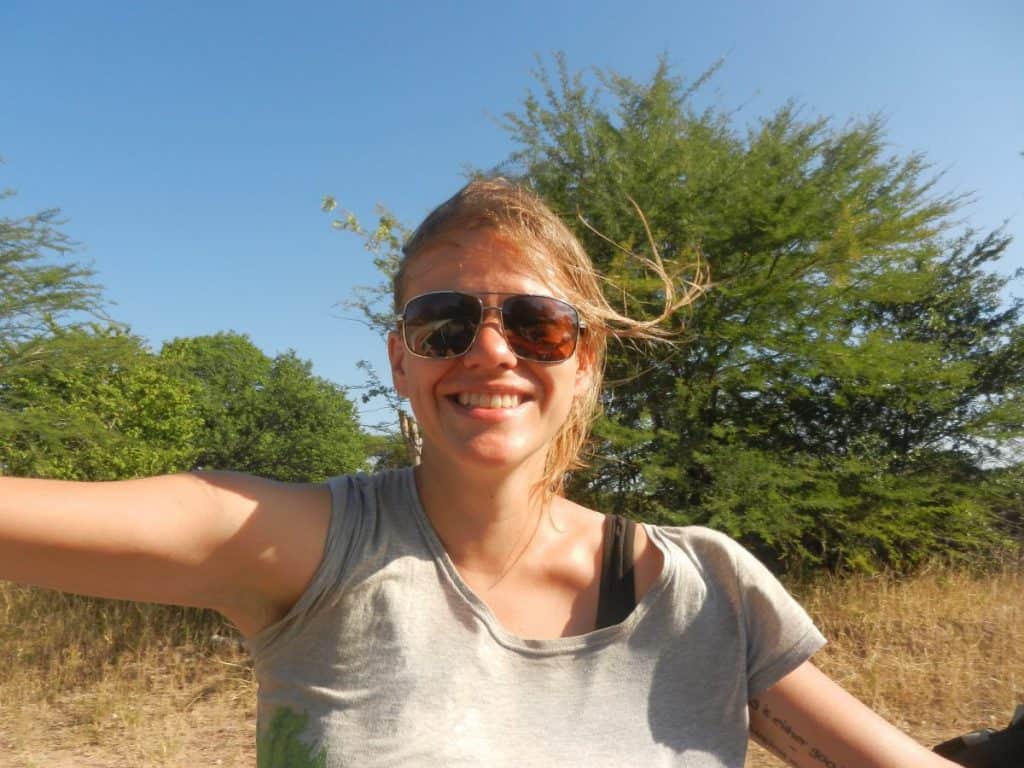Travel safety is a huge concern not just for solo female travelers like me but for anyone out and about in the World. After years of traveling, I have found that the most extensive and versatile toolset any traveler has at their disposition is totally and 100% free: their behavior. In this post, I am going to introduce you to three most important facial expressions that experienced travelers use to facilitate their travels and stay safe.
Table of Contents
The Smile
There is no change without a smile! (Nadja Tolokonnikowa, Pussy Riot Activist)
The most important of all the traveler faces is the simple, honest smile. I don’t mean a fake grin or an exaggerated grimace; just lift those corners of the mouth up, picking up the corners of your eyes while you’re at it — the smile doesn’t need to be painted onto your face, you should merely feel it flow through your body.
The smile is a multi-purpose tool you can use on many occasions, not just for your travel safety:
A smile helps you get help when you approach strangers on the street, when there’s a problem at the hostel, when you got caught with the wrong ticket on the train, and — needless to mention — when you want to make friends.
Apart from its effect on others, it works like a self-fulfilling prophecy: the very act of smiling can make you happy and want to smile more. So when you’re down or scared, take a deep breath, put on a smile, and think about what to do next.
I dare say, the smile even helps to deter trouble. After all, for most people, it’s harder to harm anyone they know, and a smile contributes to building that connection, even with strangers on the street.
The smile is so powerful it should be your standard facial expression.
Now, if you happen to suffer from bitchy resting face, this will take some extra effort and practice to keep the smile naturally going. But I promise you; it’s worth it.
In some situations, especially when you know you’ve screwed up, pair the smile with the helpless puppy eyes. This one works better for females, but guys, don’t count out the power of being seen as sensitive and fragile.
The Blank Look
The second important traveler face is the blank look. Please note that it’s not a stare, it’s a look. Stares tend to intensify situations – not very good for your travel safety – while the look will hopefully let people know two things: a) Don’t mess with me! and b) Is this really worth getting wound up about?
More advanced users can pair the look with a slight pulling up of an eyebrow to underscore their point.
Reserve it for annoying people who don’t know how to use a handkerchief, who just don’t get that you aren’t impressed by how they bribed their way across the Congolese border, or who are trying to tell you that your coffee is €5 instead of the €1.50 the local next to you just paid.
Remember not to overuse the blank look; because it always leaves a negative feeling, which can last up to a few hours, while the smile fills you with optimism. Skillful travelers know when to use the smile paired with an action, like handing the guy a handkerchief, taking a deep breath, saying “Please stop talking to me.”, or putting €1.50 on the counter and leaving, instead of the blank look.
An extremely useful application of the blank look is to keep the seat next to you on the overnight bus free.
The Acid Stare
There are some situations when the smile and the blank look just won’t do. For those very rare occasions practice your acid stare. Reserve this one for exceptional situations when the other person isn’t susceptible to more subtle expressions: mostly drunks and jerks.
Note that the acid stare has some risks attached, as people who don’t get the message are more likely to respond with physical violence. Therefore, always pair the acid stare with thinking ahead about a possible flight or — if fleeing is not an option — defense scenario.
And there you have it: Being mindful about how you are perceived by the people around you can not just increase your travel safety but make traveling as a whole a lot easier. An honest smile should always be your first choice for a facial expression; it makes you feel more relaxed, and that’s contagious.
Note: This post was initially published in October 2016 and updated in February 2018.

